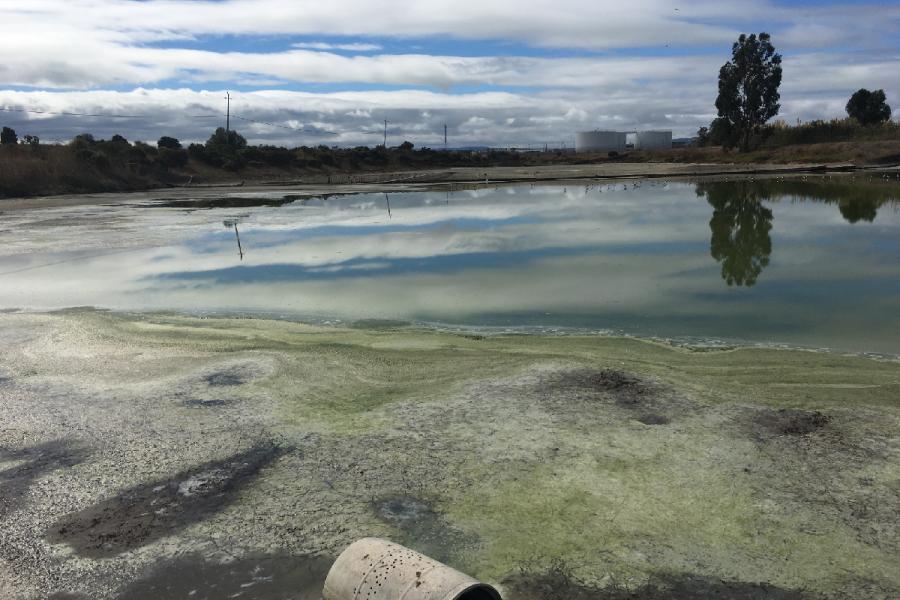San Leandro Treatment Wetland for Pollution Reduction, Habitat Enhancement and Shoreline Resiliency

$539,000
San Leandro, Alameda County, East Region
Planning; Design; Permitting
Safe, Clean Water and Pollution Prevention Program; Vital Fish, Bird and Wildlife Habitat Program; Integrated Flood Protection Program; Shoreline Public Access Program
East Bay Dischargers Authority (EBDA), San Francisco Estuary Institute (SFEI), San Francisco Bay Nutrient Management Strategy (NMS)
2023 UPDATE: The project timeline has been amended to extend into January 2024. The City is in the final process of determining whether on-site soil can be utilized to fill the treatment wetland to a design elevation or if other alternatives must be pursued. The City initiated the Initial Study and Mitigated Negative Declaration for the Project, which is about 30% complete.
***
The project will prepare detailed designs, permit applications, and environmental documentation for the restoration of a 4.3- acre wastewater storage basin to create a multi-benefit treatment wetland at the City of San Leandro’s Water Pollution Control Plant (WPCP), and develop a community-based shoreline resiliency and tidal marsh restoration vision for the surrounding area. It will advance the reduction of wastewater-borne contamination and eutrophication via development of new forms of green infrastructure.
For decades, San Francisco Bay has been recognized as a nutrient-enriched estuary, largely due to heavy inputs of nitrogen and phosphorus from 40+ wastewater treatment plants that discharge to its subembayments. Until recently, the Bay has resisted nutrient over-enrichment due to high turbidity, strong tidal mixing, and grazing by bivalves. However, ongoing observations by USGS and the San Francisco Estuary Institute (SFEI) suggest additional water quality limits and management actions are needed to protect SF Bay from the potential effects of nutrient over-enrichment, such as harmful algae blooms and low dissolved oxygen. Implementation of this project will significantly improve habitat conditions at a contaminated shoreline site and is anticipated to reduce nitrogen waste from San Leandro’s WPCP by at least 15-20%, equivalent to about 40,000 kg of nitrogen per year.
In addition to design of the treatment wetland, the project will include coordination with surrounding landowners to enhance shoreline resiliency for sea level rise (SLR) adaptation. San Leandro’s WPCP, built in 1939, is the oldest among those examined and 82% of the City’s wastewater infrastructure is exposed to potential flooding at just 16 inches of SLR. Phase 1 of this Project involves the conversion of a marginal storage pond to a treatment wetland, ensuring this pond serves not just a single-use flood storage function but meets multiple goals of water quality improvement, habitat enhancement, public access, and SLR adaptation.
